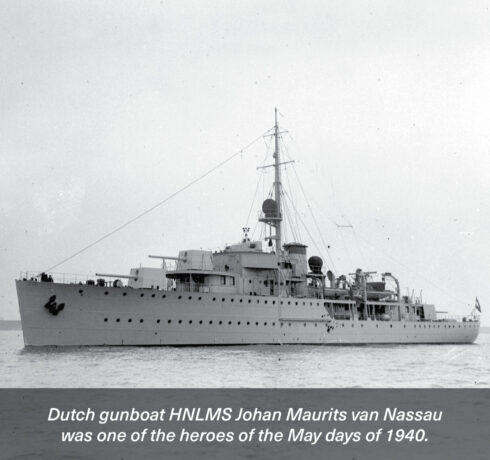It is a misty morning as the advancing German army is preparing for another assault of Kornwerderzand, halfway up the Afsluitdijk, on 14 May 1940. The German artillery had arrived the day before, after taking the eastern defence line at Wons in Friesland. Their aim is to capture the Afsluitdijk and invade the province of North Holland from there. But then, completely unexpectedly, a barrage of 98 shells falls from the direction of the Wadden Sea. There, hidden in the fog, lies the Dutch gunboat HNLMS Johan Maurits van Nassau; one of the heroes of the May days of 1940.
 Ron van Maanen of the Zeeuws Archief.
Ron van Maanen of the Zeeuws Archief.
The Johan Maurits shouldn’t be patrolling Dutch waters at all. The nearly 79-metre-long gunboat has been specially designed in 1931 for deployment as a permanent station ship in the Dutch West Indies. The Dutch government order its construction after a humiliating raid by Venezuelan rebels on the Waterfort in Willemstad, Curaçao. “The raid on the Waterfort represents a huge loss of face for the Dutch government,” says the Zeeland Archives’ Royal Schelde expert Ron van Maanen. “Questions were being asked in the Senate as to why there was not a continuous Dutch naval presence in the West Indies and whether the navy was capable. It was one of the few times the Dutch parliament decided that a ship should be sent.”
Engineer W.M. den Hollander designs the Johan Maurits based on the existing Flores-class gunboats, the famous ‘Terrible Twins’ Flores and Sumba. However, the ship is not a sister ship but a greatly improved version. “She was built primarily for a stay in the tropics and sufficiently armed to maintain order,” Ron says. In 1931, HNLMS Johan Maurits is launched at the Royal Schelde Shipyard in Vlissingen, and in 1933 the ship is ready for departure to Curaçao. “In addition to the ship, De Schelde supplies the triple expansion steam engines and Yarrow-licensed boilers. Krupp supplied hardened steel for the armour and the entire armoured deck was welded,” Ron adds. The ship was equipped with three 15cm guns, two 40mm guns and four 12.7mm machine guns.
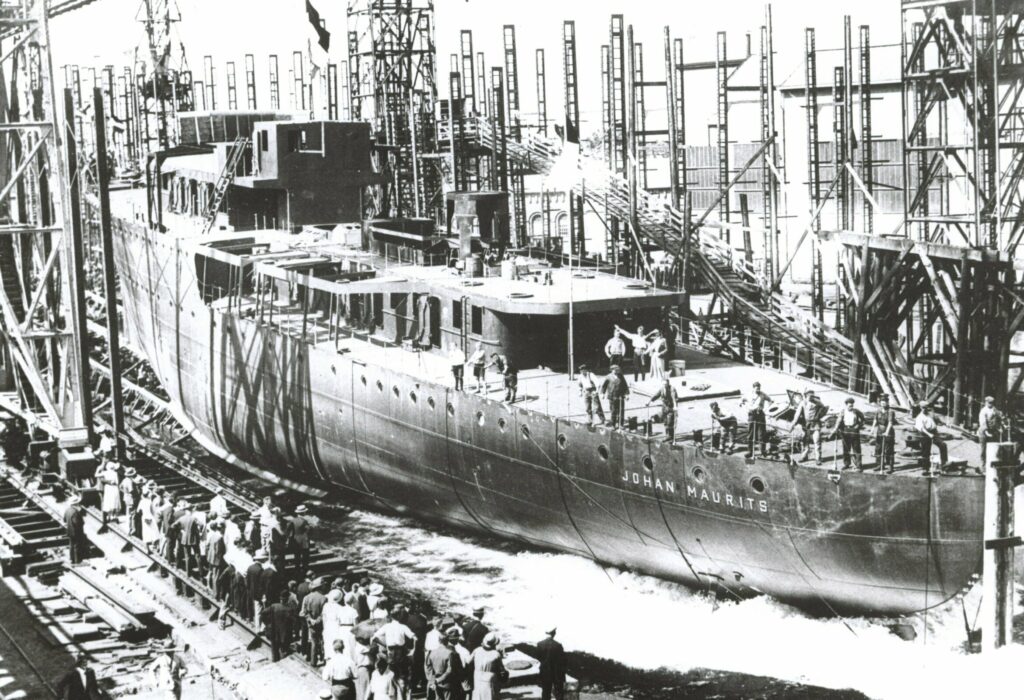 HNLMS Johan Maurits was launched at the Royal Schelde Shipyard in Vlissingen in 1931.
HNLMS Johan Maurits was launched at the Royal Schelde Shipyard in Vlissingen in 1931.
On 29 June 1933, HNLMS Johan Maurits van Nassau departs from Den Helder, reaching Curaçao on 8 August 1933. For four years, the ship patrols Caribbean waters without seeing too much action. Then the Spanish Civil War breaks out and in May 1937 the Johan Maurits is recalled to Europe to protect Dutch merchant ships in the Mediterranean.
"The Johan Maurits manages to shoot down two German planes. That's not an easy feat, so it's quite an achievement." Ron van Maanen
One of those ships is Rambon which has been seized once before by the Spanish. The crew wants to avoid a repeat of this and asks the Johan Maurits for protection. However, the merchant ship arrives at the agreed place two hours early and the Johan Maurits is nowhere to be seen. Ron: “They encounter a Spanish armed trawler which summons them to sail with it to the port of Ceuta. Rambon tries to stall for time, but a second Spanish trawler fires a shot across the bow. Then, the Johan Maurits emerges from the morning fog at full speed signalling that that the Dutch ship is under her protection and the Spanish ships blow their retreat.”
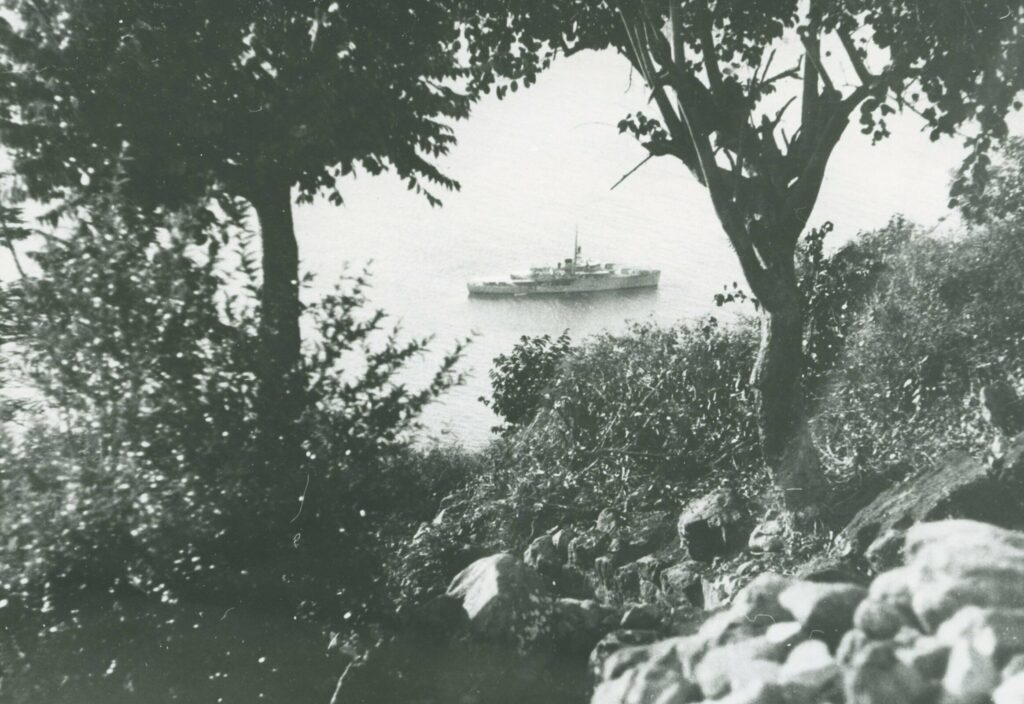 Dutch gunboat HNLMS Johan Maurits van Nassau off the coast of Saba.
Dutch gunboat HNLMS Johan Maurits van Nassau off the coast of Saba.
While the Rambon sails on with a sigh of relief; the Johan Maurits experiences its own narrow escape. “They encounter a Spanish heavy cruiser, which eventually sails on without incident. The Johan Maurits is battle-ready and the football song ‘We are not afraid’ can be heard from the staff quarters. It is fortunate that the Spanish back down, as the Spanish cruisers are brand new and heavily armed. The Johan Maurits wouldn’t have had a chance in a fight, but the story goes to show that bluffing pays off,” laughs Ron.
On 6 October 1938, the Johan Maurits returns to Den Helder and is readied for a new period in the Dutch West Indies. She arrives in early 1939, but due to the impending German danger, the ship is almost immediately called back to the Netherlands. On 10 May 1940, the Johan Maurits is at anchor in Vlissingen when German aircraft fly over, dropping magnetic mines in the mouth of the Western Scheldt and bombing targets in Vlissingen. “The Johan Maurits opens fire on the planes and even manages to shoot one down with the light artillery,” says Ron. “That’s quite an achievement as it is not easy to do.”
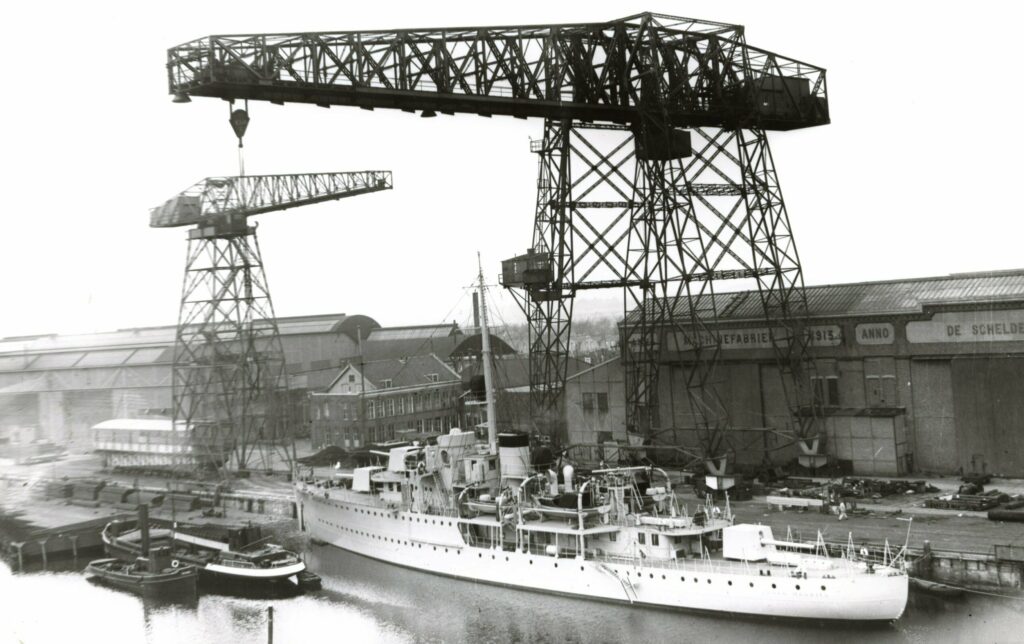 HNLMS Johan Maurits van Nassau is ready for the handover.
HNLMS Johan Maurits van Nassau is ready for the handover.
That same day, the Johan Maurits van Nassau is sent to Hook of Holland to liberate the airfield at Waalhaven via the Nieuwe Waterweg. “But after the loss of HNLMS Van Galen being sunk by German bombers in the Merwehaven near Rotterdam, the Johan Maurits is ordered back to Vlissingen,” Ron explains. “Only it turns out that the mouth of the Nieuwe Waterweg is full of magnetic mines and that the ship has been again incredibly lucky on its way in.”
The luck continues as the ship tries to avoid the mines on the way back by sailing close to the shore. Although the ship’s port propeller gets snagged in a chain from a light buoy and the ship is in a vulnerable spot, she is not spotted by German aircraft. During the night, work is carried out to free the propeller from the chain and to repair as much damage as possible. On the way to Den Helder, the ship shoots down a passing Heinkel bomber.
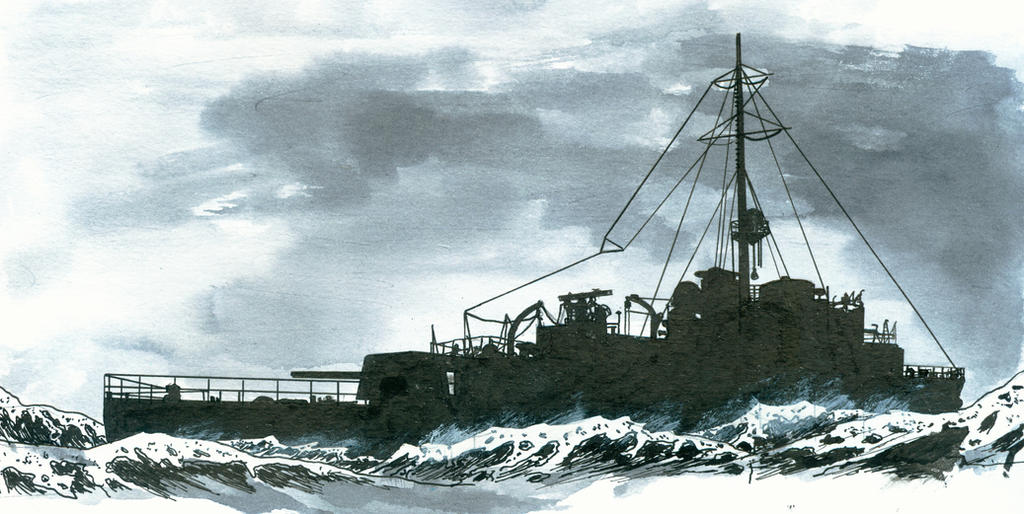 HNLMS Johan Maurits van Nassau depicted in the fog in a drawing by Ron van Maanen.
HNLMS Johan Maurits van Nassau depicted in the fog in a drawing by Ron van Maanen.
Then it is 13 May. HNLMS Johan Marits van Nassau is sent into the Wadden Sea to provide support to the Kornwerderzand defences. The casemates on the Afsluitdijk come under fire from German artillery that afternoon, but the heavy artillery does little damage to the heavily fortified structures. The German storm troops are forced back that same evening by the guns from the casemates. During the night of 13-14 May, the Johan Maurits van Nassau fires three salvos of two shots at the eastern head of the Afsluitdijk to see if the 18-kilometre distance is bridgeable. This prove2 to be the case and the gunboat waits patiently until morning.
When the Germans make another attempt in the morning, a volley of 15cm shells rains down out of the fog and, with the help of spotters in the casemates, manages to find the enemy. A total of 98 shells are fired and the German soldiers eventually have no choice but to retreat. When the Netherlands capitulates on the night of 14-15 May, Kornwerderzand is the only Dutch defensive line that managed to hold out against the German attacks. A fact partly due to the successful performance of HNLMS Johan Maurits van Nassau, although the bluffing gunboat does not live to see the capitulation.
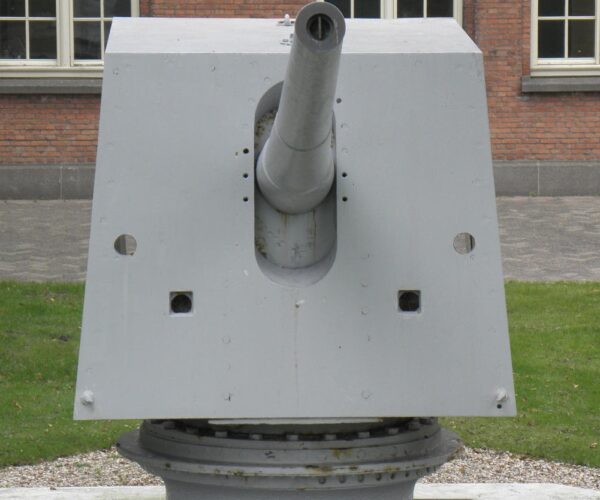 The rear 15cm gun was salvaged years later and is set up in front of the Royal Naval Institute in Den Helder.
The rear 15cm gun was salvaged years later and is set up in front of the Royal Naval Institute in Den Helder.
“At 3pm on 14 May, the Johan Maurits is ordered to head to England to stay out of German hands. Ten miles west of Callantsoog, the Johan Maurits and other ships in the convoy are attacked by German aircraft. The other ships escape, but the Johan Maurits is hit by two bombs and sinks, killing 17 crew members,” Ron concludes. Thus ends the short but illustrious career of HNLMS Johan Maurits van Nassau. The rear 15cm gun is salvaged years later and set up in front of the Royal Naval Institute in Den Helder. The anchor is also salvaged and can be seen today at the Naval Museum in Den Helder.

